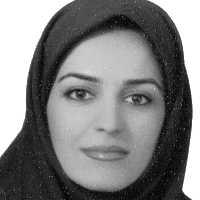An Insight into the Interrelation between the Mosques’ Architectural Codes and the Quality of Worshipers’ Presence of the Heart: A Case Study of the Safavid Mosques in Isfahan
The mosque is and will stay one of the key and vital elements in the Islamic culture. It plays a great role in all dimensions of worshiping, praying, creating a society, solving social problems, and establishing a God-ruled government. In fact, the mosque is the soul in the body of its place and religion, and it is unfeasible to separate the soul from the body. The design of the traditional mosques was in such a way that the architects and artists, in addition to using special architectural techniques, used all the then-available art techniques to build a mosque whose components would calm the worshipers and lead them to strengthen their beliefs. In this work, Safavid architecture, one of the well known periods of Iranian and Islamic architecture, was selected and was researched by emphasizing on the existence of a common denominator in the design of the past traditional Iranian mosques. The objectives of this study are hence: a) to identify, describe and explain the physical component system of the code on the individual’s presence of the heart, and b) to identify the physical mindfulness components in the mosques architecture, and c) to identify the main characteristics of the famous and well-known mosques. In order to achieve these objectives, the researchers generally should seek to answer two main questions: what are the mysterious components of traditional Iranian mosques specifically? And what are the main physical components of Safavid Mosques for ensuring the mindfulness and the presence of the heart of individuals? In the present study, a mixed exploratory method is used. The effect of mosque’s physical component system and each component’s signification on the presence of the heart in Safavid mosques were investigated in detail for answering the two questions above. According to the "Likert scale”, two types of questionnaires were designed. Then, a multi-criteria decision-making method alongside the "Seca classification method" were used to study the interrelation between the aforementioned components and their effects in the following Isfahan’s mosques: Imam Mosque as the only asymmetrical mosque in the world that is the summary of the traditions and patterns at its period of construction; and Sheikh Lotfolah Mosque where any courtyard or minaret cannot be found; and Hakim Mosque as having many Mihrabs and interesting brickworks inside; And AghaNoor Mosque as the masterpiece of that period. Our findings show that there is a significant interrelation between the elements of physical component system with the presence of the heart and mindfulness of the prayers and masses. Therefore, respecting all the elements of physical component system altogether would increase the mindfulness and the presence of the heart in masses of prayers leading to the creation and strengthening of the architectural patterns in harmony with human needs and expectations in important religious places. This, in turn, will lead to the recreation of Islamic-Iranian architectural patterns having a tremendous impact on the development and deepening of religious values in masses and will boost the motivation of worshipers to continue attending the mosque.
-
A Study Of Realistic Data-Based Architecture
Hadi Farhangdoust *,
Raf Quarterly Scientific Journal of Architecture, Restoration and Urbanism, -
Presentation of "integrated teaching reference model" in architecture and urbanization based on curriculum on macro to micro level of education
Hadi Farhangdoust*, Toktam Hanaee,
Interdisciplinary studies in architecture and urbanism development,


